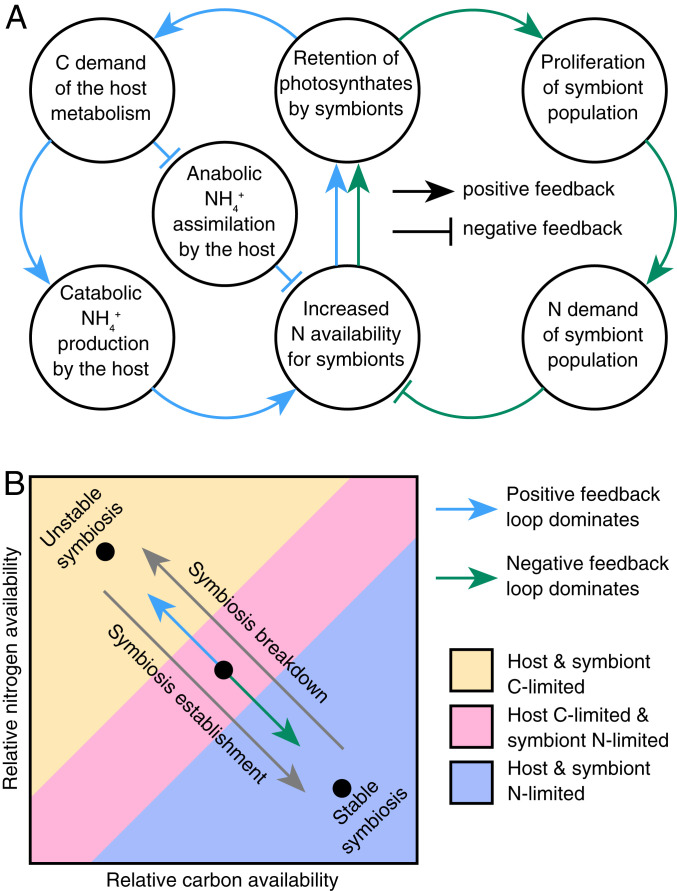Fig. 5.
Model outlining the dynamic transition between a stable and unstable state of the coral–algal symbiosis based on metabolic interactions between the coral host and its algal symbionts. (A) This model posits that the nutritional status of host and symbionts is passively controlled by a positive and a negative feedback loop arising from the nutrient exchange between the host and its algal symbionts. (B) In a stable state, carbon (C) translocation by algal symbionts fulfils or exceeds the metabolic C demands of the coral host, thereby arresting the symbiosis in a nitrogen (N)-limited state (purple shaded area). Environmental stressors, such as rapid warming, may cause a proportional increase of host C requirements, resulting in a feedback loop imbalance in favor of the positive feedback loop that destabilizes C cycling in the symbiosis. This imbalance will first affect the coral host metabolism resulting in C limitation, while algal symbionts remain N-limited (pink shaded area). If conditions persist, eventually the entire symbiosis shifts towards a C-limited stage (yellow shaded area). Likewise, the rapid proliferation of algal symbionts during the (re)establishment of the symbiosis will accordingly result in a feedback loop imbalance in favor of the negative feedback loop that effectively increases competition for available N between algal symbionts. Thereby, the symbiosis gradually shifts towards an N-limited state in which C translocation and recycling are maximized.

